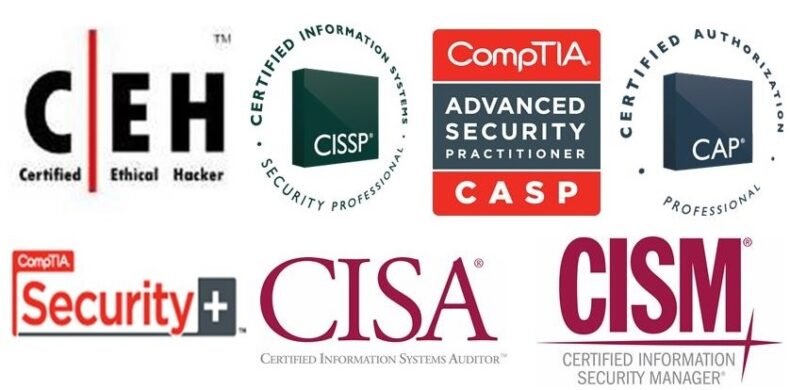
In the vast and interconnected realm of cyberspace, hacking stands as an ominous and ever-evolving threat. The dangerous world of hacking encompasses a multitude of malicious activities orchestrated by cyber criminals seeking to exploit vulnerabilities, breach security measures, and wreak havoc on individuals, businesses, and governments. In this extensive blog post, we will explore the various facets of hacking, including its types, motives, infamous incidents, and the urgent need for proactive cybersecurity measures.
Understanding Hacking
Hacking, in its simplest form, refers to the act of gaining unauthorized access to computer systems, networks, or digital devices. It involves exploiting security weaknesses and vulnerabilities to infiltrate and compromise these systems for malicious purposes. While the term “hacker” once evoked a sense of curiosity and ingenuity, today, it is more commonly associated with cybercriminals who utilize their skills for nefarious activities.
Types of Hacking
- Ethical Hacking (White Hat Hacking): Ethical hackers, also known as white hat hackers, work with organizations to identify vulnerabilities and improve their cybersecurity defenses. They help in strengthening security measures and play a vital role in combating malicious hackers.
- Malicious Hacking (Black Hat Hacking): Black hat hackers are the antithesis of ethical hackers. Their intentions are malicious, seeking financial gain, causing disruptions, stealing sensitive information, or conducting cyber espionage.
- Hacktivism: Hacktivists are motivated by social or political causes. They use hacking techniques to promote their ideologies, raise awareness, or retaliate against perceived injustices.
- State-Sponsored Hacking (Advanced Persistent Threats – APTs): Nation-states engage in cyber espionage and cyber warfare to gain intelligence, disrupt adversaries, or cause political chaos.
- Insider Threats: These involve individuals with authorized access to systems who exploit their privileges for personal gain, revenge, or other malicious motives.
Motives Behind Hacking
- Financial Gain: Many cybercriminals engage in hacking to steal sensitive financial information, commit identity theft, conduct credit card fraud, or launch ransomware attacks to extort money.
- Data Breaches and Information Theft: Hackers target organizations to steal valuable data, intellectual property, trade secrets, or customer information, which can be sold on the dark web or used for extortion.
- Cyber Espionage: Nation-states and corporate competitors engage in cyber espionage to gain a competitive edge or access classified information.
- Disruption and Destruction: Some hackers seek to cause disruptions by launching DDoS attacks, defacing websites, or spreading malware to damage systems and networks.
Infamous Hacking Incidents
- Stuxnet: Considered the first cyber weapon, Stuxnet was a sophisticated malware developed to target Iran’s nuclear facilities, causing significant damage to its uranium enrichment program.
- WannaCry: In 2017, the WannaCry ransomware attack infected hundreds of thousands of computers worldwide, exploiting a Windows vulnerability and demanding ransom payments in Bitcoin.
- Equifax Data Breach: In 2017, Equifax, a major credit reporting agency, suffered a massive data breach exposing the sensitive information of approximately 147 million people.
- SolarWinds Supply Chain Attack: In 2020, state-sponsored hackers compromised SolarWinds, a prominent software provider, and distributed malware to their customers, including several U.S. government agencies.
The Urgent Need for Proactive Cybersecurity Measures
Given the pervasive threat of hacking, it is crucial to adopt proactive cybersecurity measures to safeguard against potential attacks. Some essential steps include:
- Strong Passwords and Multi-Factor Authentication (MFA): Implementing robust password policies and MFA to enhance authentication security.
- Regular Software Updates and Patch Management: Keeping all software, operating systems, and applications up to date to fix known vulnerabilities.
- Network Segmentation: Dividing networks into segments to limit the impact of breaches and minimize lateral movement.
- Data Encryption: Protecting sensitive information with encryption to maintain confidentiality.
- Employee Training: Educating employees about cybersecurity best practices, recognizing phishing attempts, and promoting a security-conscious culture.
- Incident Response Planning: Developing a well-defined incident response plan to handle and recover from cyberattacks effectively.
Conclusion
The dangerous world of hacking presents an ever-growing threat to our increasingly interconnected society. As hacking techniques become more sophisticated, proactive cybersecurity measures become paramount. It is essential for individuals, organizations, and governments to stay vigilant, collaborate, and invest in robust cybersecurity strategies to defend against the dark forces of hacking.
By understanding the motives and methods of hackers, as well as the potential consequences of their actions, we can work together to create a safer digital landscape for ourselves and future generations. In this digital age, the fight against hacking is not optional; it is an imperative mission that demands our collective commitment to protect and secure the digital frontiers of our world.





Leave a Reply